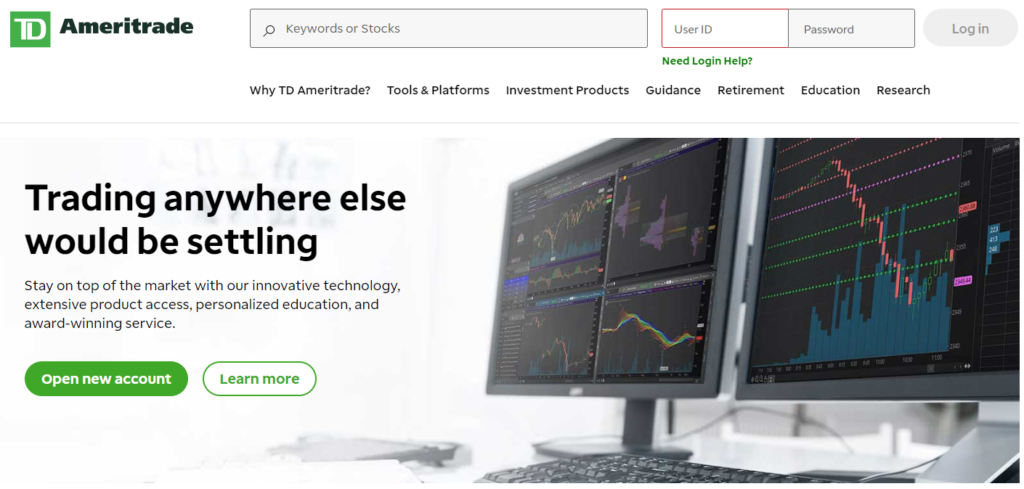The stock market is the greatest wealth-building tool on earth. Unfortunately, most people overcomplicate it. The truth is, it’s not that difficult. But the secret to success is starting early. So if you’re reading this, my hope is you’re in your 20s or younger.
If you’re new to investing and not sure where to start, follow these basic steps and you’re almost guaranteed to build substantial wealth in your lifetime.
DISCLAIMER: This article contains affiliate links for which I earn a small commission if you purchase a product or service after clicking the link. Please know that I only promote products or services in which I have personal experience and/or believe could add value to others.
Prerequisites
Getting started in investing can often feel like a daunting task, but it’s actually very simple. You don’t need a PhD in Finance, $10,000 in cash or a genius IQ. You can get started at any age with as little as $100.
Prior to jumping into the world of investing, you need to ask yourself a couple of important questions:
- Do you anticipate needing your investment money within the next 6 to 12 months? To pay for living expenses, a new car, gas, Chipotle, etc…? If yes, you’re not quite ready to start investing. You should only invest money you are reasonably certain you won’t need for at least a year, preferably much longer.
- Can you stomach watching your investment decline by 50% or more? If not, investing is not for you because it’s almost certain you’ll experience a large, unrealized loss in your investing career. If the thought of losing half your hard-earned money makes you sick, you may be better off keeping that money in the bank.
Earn some cash
Assuming you meet the prerequisites to get started, the next thing you need to do is earn and/or accumulate some cash. As much as you may want to, don’t blow the $100 your grandma gave you for your birthday on some meaningless item you’ll forget about 3 months from now.
Instead, put that money in a piggy bank. Start mowing your neighbor’s grass or walking their dog. Drive for Uber or DoorDash. Freelance in something you enjoy. Get a part-time job. There are a ton of options available, even for teenagers, to earn extra cash.
Open a brokerage account
You have some cash, so now what? Now, you need to open a brokerage account. If you’re new to investing, you may be wondering what a brokerage is. You can read a detailed explanation here.
All you really need to know is that it’s where you can buy and sell stocks, mutual funds, bonds and commodities. TD Ameritrade, E*Trade, Fidelity, and Interactive Brokers are all examples of brokerages.

One of the first things you’ll see on any of these sites is the “Open an account” button. You can open an account with any of them and be up and running within a few days.
If you’re 18 or older, you can open a brokerage account yourself. But if you’re younger than 18, you’ll need a parent or guardian to open a custodial account on your behalf. Once your account is open, you need to fund it (i.e. deposit money).
Make your first purchase
Your account is funded, now all that’s left to do is buy. But wait, what should you buy? The options are endless and overwhelming. There are thousands of individual stocks, bonds, mutual funds and ETFs (exchange traded funds) to choose from.
As a beginner, you don’t need to worry about this. You simply need to buy a S&P 500 index fund or ETF. Here are some options:
- Fidelity 500 Index Fund (FXAIX)
- Schwab S&P 500 Index Fund (SWPPX)
- Vanguard 500 Index Fund Admiral Shares (VFIAX)
- SPDR S&P 500 ETF Trust (SPY)
- Vanguard S&P 500 ETF (VOO)
- iShares Core S&P 500 ETF(IVV)
The S&P 500 is a basket of the 500 largest companies in the United States. When you invest in the S&P 500, you invest in American business.

On average, the S&P 500 returns 8% to 10% per year. When you invest in the S&P 500, you’re ensuring you receive your share of the market’s returns. In fact, most fund managers don’t beat the market over the long run. If you can’t beat them, join them.
Don’t take my word for it. Warren Buffett, arguably the most successful investor of all time, shared this advice in May 2022:
In my view, for most people, the best thing to do is own the S&P 500 index fund.
Warren Buffett
In fact, in his will, Mr. Buffett plans to invest 90% of his estate in the S&P 500 index. By the way, Mr. Buffett’s net worth is over $100 billion.
Rinse and repeat
You’ve made your first purchase. Congratulations! You’re an investor. But now what?
It’s simple, rinse and repeat. As money becomes available, continue purchasing the same S&P 500 index fund or ETF you purchased originally. If you bought FXAIX, continue buying FXAIX. If you can set up a recurring monthly purchase, even better.
Some days the market will be up when you buy. Other days it’ll be down when you buy. What the market is doing on any individual day is irrelevant. Just continue buying regardless. It’s called dollar-cost averaging.

Unless you’re in dire straits and need the money ASAP, selling shouldn’t be in your vocabulary.
Watch it grow
You’ve invested in the S&P 500 index and have set up a monthly recurring reinvestment. Now, you need to let time do its thing.
I promise, if you follow this process beginning at age 16, your 30-year-old self will thank you, your 40-year-old self will give you a kiss, and your 50-year-old self may very well be retired. Compound interest is that powerful.
